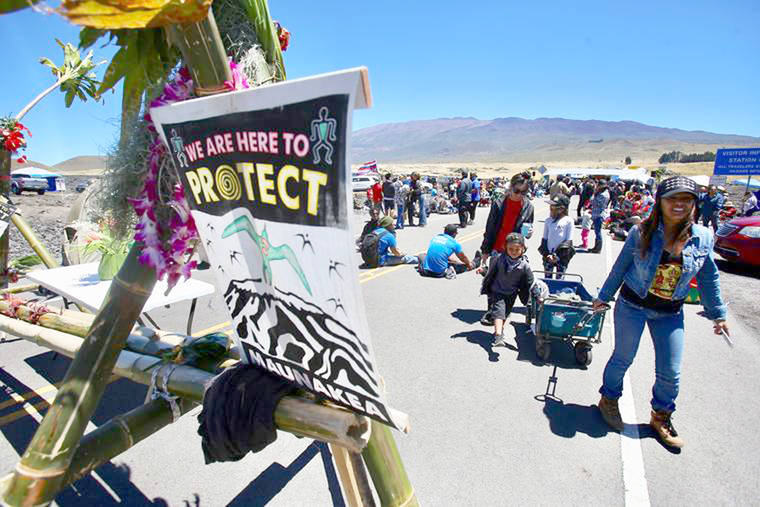Ige visits telescope protesters
HONOLULU — The governor of Hawaii on Tuesday visited protesters blocking the construction of a giant telescope on the state’s tallest mountain while acknowledging that their grievances were not just about a new observatory but also about the treatment of Native Hawaiians going back more than a century.
Activists met the governor with a nose-to-nose greeting called honi as he approached a tent where Native Hawaiian elders have been blocking a road prevent to construction equipment and crews from reaching the summit of Mauna Kea.
Some Native Hawaiians consider the summit sacred and believe building the Thirty Meter Telescope there will only do more harm to a site that already hosts more than a dozen observatories.
Hawaii News Now streamed the governor’s arrival live, showing protesters presenting him with lei and thanking him for coming.
Earlier in the day Ige said he would ask Hawaii County’s mayor to lead efforts to find common ground with the protesters.
The governor said in a statement he and Hawaii County Mayor Harry Kim understand that the issues go deeper than the telescope and were about “righting the wrongs done to the Hawaiian people.”
About 1,000 activists gathered Tuesday halfway up Mauna Kea in opposition to the $1.4 billion telescope, marking the ninth day of the protest. Over the weekend, crowds swelled to 2,000 people.
Ige indicated last week that he was willing to talk to protesters. But his visit and statement Tuesday were the first public steps he’s taken toward that end.
“We will be working together to determine next steps that are in the best interests of all the people of Hawaii,” Ige said in his statement.
Protest leader Kealoha Pisciotta said officials must consider not building the telescope on Mauna Kea.
She said she met previously with the mayor and governor without making any progress.
“We’ve done all of that. But it’s window dressing trying to get our buy-in,” Pisciotta said. “We really need people to honestly consider our positions this time.”
Much of the opposition has tapped into deep-seated grievances tied to the U.S.-backed overthrow of the Hawaiian Kingdom in 1893, clashes over water and land rights, and frustrations over tourism and the exploitation of Hawaiian culture.
A consortium of universities and national observatories is pursuing the telescope project, which they hope will allow them to peer back more than 13 billion years to early moments of the universe.
They want to build on Mauna Kea because it has some of the world’s best conditions for viewing the night sky.
There are 13 telescopes already on Mauna Kea’s summit. The protesters say building another would further desecrate the site.
In state court Tuesday, a panel of three judges ruled that Ige would need to modify an emergency proclamation he issued last week to allow one Native Hawaiian cultural practitioner to visit the summit for cultural and religious purposes.
Separately, another judge denied a motion filed by telescope opponents seeking a temporary restraining order to stop construction.




